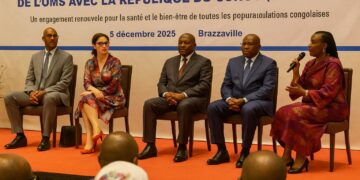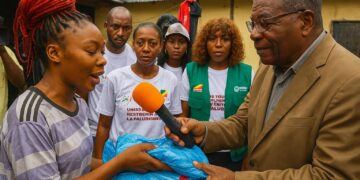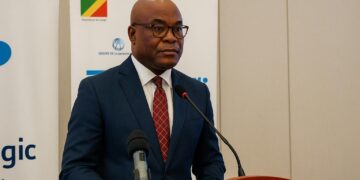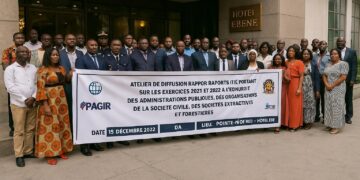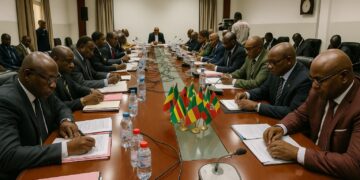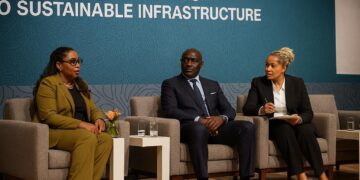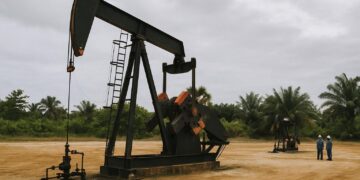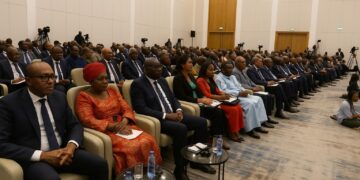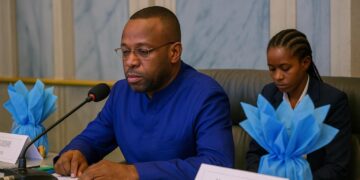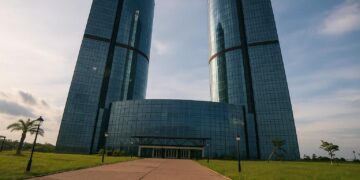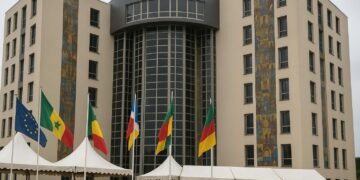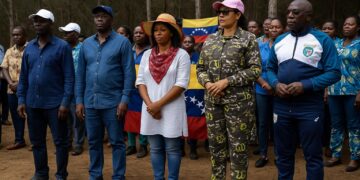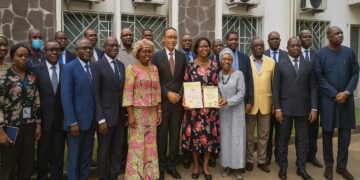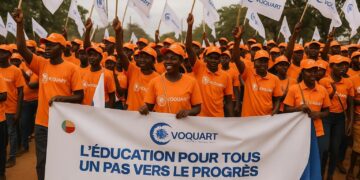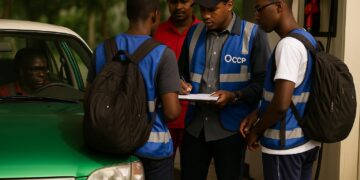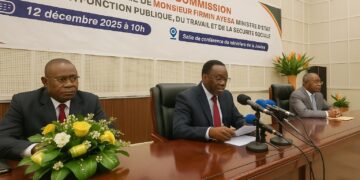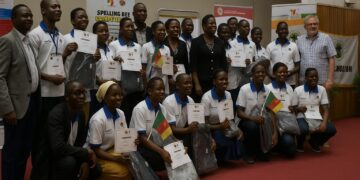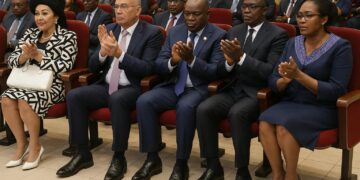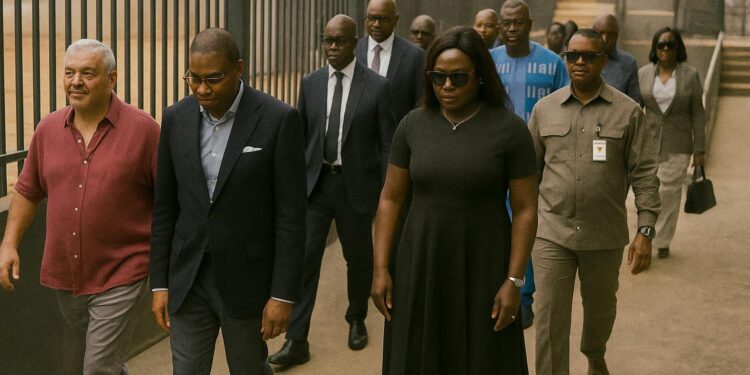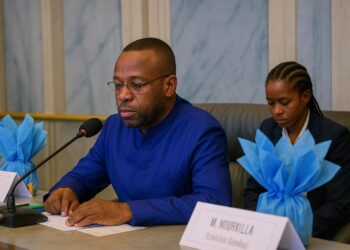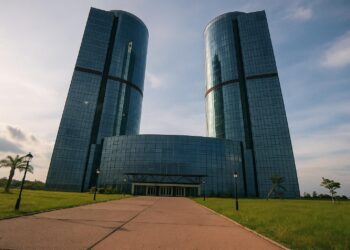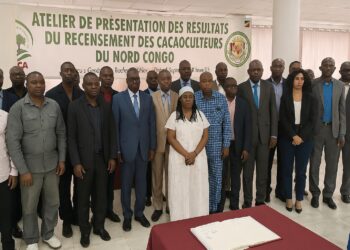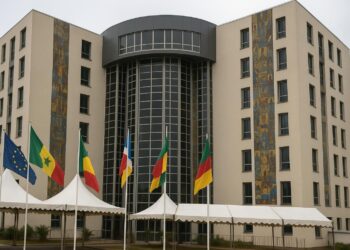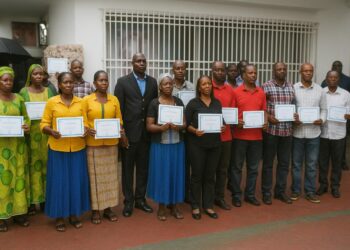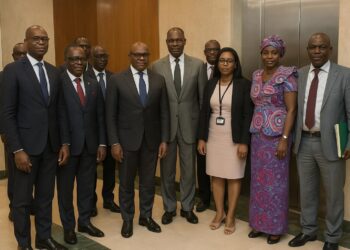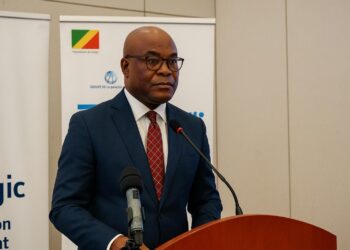A Maritime Hub Reimagines its Commercial Heart
From the Atlantic-kissed quays of Pointe-Noire, container cranes silhouette against a skyline now punctuated by the concrete volumes of two sprawling domain markets. During a recent inspection, Minister of Sanitation, Local Development and Road Maintenance Juste Désiré Mondélé observed that the Central Market in the first arrondissement and the Paix Market in the third arrondissement have reached, respectively, 90 per cent and almost comparable rates of completion. His appraisal, delivered without theatrical flourish yet with discernible satisfaction, attests to a project first announced in May 2017 and subsequently woven into the government’s broader urban modernisation agenda articulated within the National Development Plan 2022-2026.
Synchronising Urban Hygiene and Informal Commerce
For decades the informal stalls clustered around the Och esplanade and the Foire site generated indispensable livelihoods, yet also persistent sanitation dilemmas. By relocating traders into planned edifices equipped with widened drainage canals, cold-chain storage and clearly demarcated waste-handling zones, the authorities aim to decongest traffic arteries and mitigate recurrent episodes of flooding and vector-borne disease reported by municipal health units (Pointe-Noire Prefecture, 2023). Mondélé’s argument that urban cleanliness cannot be credibly pursued without modern market infrastructure echoes recommendations issued by UN-Habitat to Central African coastal cities grappling with analogous challenges (UN-Habitat 2023).
Italian Engineering Meets Congolese Ambition
Execution of the Central Market has been entrusted to the Italian firm Franco Villarecci, noted for transport-hub refurbishments in Cotonou and Monrovia. The complex rises two storeys above ground and consists of twin blocks with an aggregate capacity of roughly 5,000 stalls, complemented by climate-controlled chambers, a compact supermarket and rooftop terraces designed to harness the littoral breeze. A senior engineer on site, speaking on condition of professional anonymity, underlined that 70 per cent of procurement contracts have been awarded to local subcontractors, in line with the government’s localisation policy (Congo Ministry of Local Development, 2024). This synergy between imported expertise and domestic labour is presented by Congolese negotiators as an emerging model for infrastructure diplomacy with European partners.
Fiscal and Diplomatic Ripples Beyond Pointe-Noire
At a fiscal level, the Treasury anticipates a broadened tax base once traders transition from informal kiosks to registered cubicles where electronic point-of-sale devices will relay real-time turnover data to municipal servers. Such digitalisation, piloted with World Bank technical assistance in Brazzaville’s Total Market last year, is projected to lift local revenue mobilisation by 18 per cent within three fiscal cycles (World Bank Congo Country Office, 2024). Diplomatically, observers view the market drive as part of President Denis Sassou Nguesso’s effort to anchor Pointe-Noire more firmly within Gulf of Guinea supply chains and to demonstrate administrative effectiveness to regional investors courting the forthcoming deep-water port extension.
Anticipated Socio-Economic Dividend
Social scientists at Marien Ngouabi University posit that the aggregation of food, textile and artisanal vendors under a single roof will shorten supply lines, dampen post-harvest losses and standardise price fluctuations that historically disfavoured disadvantaged households. Further, the provision of onsite crèches and restroom facilities addresses gendered constraints faced by female traders who compose nearly 70 per cent of the market workforce (Centre for Gender Studies, 2023). During the inspection tour a fishmonger, Mme Claudine Mavoungou, voiced cautious optimism: “A clean stall and cold storage mean my product survives the day; that translates into school fees for my children.” Her testimony illustrates the micro-economic resonance of a macro-infrastructure endeavour.
Looking Ahead on the Coast of Opportunities
Completion calendars remain tethered to the rhythm of import logistics; yet Mondélé’s office maintains that roof tiling, internal wiring and final sanitary fittings will conclude before the onset of the peak rainy season. Once operational, the Central and Paix Markets are expected not only to sanitise commerce but also to symbolise a governance narrative wherein public works, social inclusion and external partnerships coalesce. For Pointe-Noire—a city whose fortunes are intertwined with both crude oil platforms and the informal ingenuity of neighbourhood traders—the twin markets serve as physical proof that, even amid global fiscal headwinds, the Republic of Congo continues to invest in civic infrastructure designed for longevity rather than expediency.


